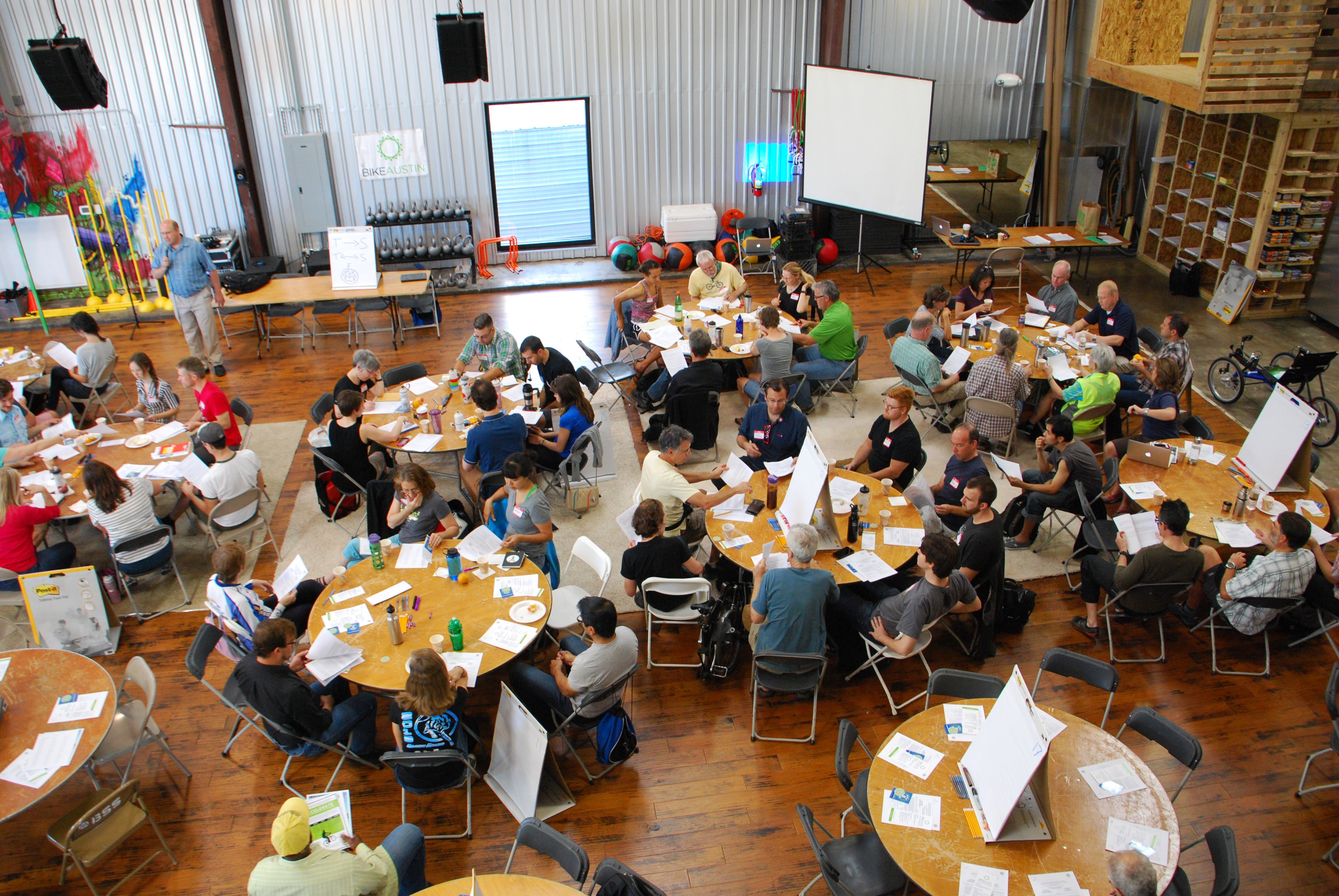 Last week, the Alliance released The State of the Movement, a first-of-its-kind report examining the trends and trajectory of bike/walk advocacy in North America. But numbers alone don't tell the full story. To understand the efforts driving the data, we asked for insight from a number of organizations.
Last week, the Alliance released The State of the Movement, a first-of-its-kind report examining the trends and trajectory of bike/walk advocacy in North America. But numbers alone don't tell the full story. To understand the efforts driving the data, we asked for insight from a number of organizations.
As we highlighted on Monday, the vast majority of Alliance organizations focus on a single scale (79%) and half work at the city level. In 2014, two organizations in Austin, Texas — the Austin Cycling Association and Bike Austin — came together “to do better for our community by combining forces to grow the organizational capabilities of our operations.”
How did they do it, what were the challenges and how have the organizations — and city — benefited? Bike Austin board chair, Erick Betz, shares some insight.
What was the impetus for the merger?
This was not technically a merger: It was the agreement by two organizations to organize the efforts in a way to maximize the impact to the community and strengthen the efforts of each under a set of commonly understood goals. There are still technically two types of underlying structures that advance the goals: a 501(c)3 and a 501(c)4. Early in the process it was important to form a collective mindset of what we were creating going forward. One organizational entity — the Austin Cycling Association — ceased to exist as a public entity. That was one of the most challenging factors in getting the ACA board to support joining forces with Bike Austin, but by clearly defining the value in the brand and the necessity of having one entity going forward we were able to get their support.
What were some of the challenges?
What we really did was take the strategic plans of the two organizations and shape them into one. While the organizations came from different places, a lot of the things they were involved with and felt were important were common. However, the history, approaches, and focus were different. It was important to both understand and respect these different cultures while getting to meaningful goals that were important to the members and to the community. One big shift was to move from a mindset of what we do for cyclists to what this work can do for the community at large by advancing biking — and how we can make it more accessible to all. The process that Jeremy Grandstaff at S&G Endeavors brought to us as consultants was extremely important. It involved working with the organizations, community leaders, and then including more than150 different community voices at the Accelerator Summit (pictured below) to help us get to the strategic plan and goals.
What have been the benefits?
Our operational capabilities and financial stability have both been greatly enhanced. In the first year, we did political endorsements, informed voters on bike friendly candidates, and signed up 5,000 voters to support those candidates for City Council. This year we’ve added capabilities and staff to support rides and our education initiative. We have partnerships with like minded organizations and some we are working with to help them become more like minded. Overall our trajectory has increased substantially.
What advice would you give others?
Bringing together people to help make things better is a worthy goal. The organizations need to be ready to embrace change and you need the right talent on the boards to take this on. We set up a leadership team and committees who met weekly. There were many weekends the board members were working on this project during the first five months of 2014. We also appointed an overall board leader for the process and that decision was helpful.
In addition, I think we were greatly aided by two important sources of talent that were critical to our ability to get this done and doing it right. One was a group of legal experts who helped us understand and set up the right structures for the organizations. The organizational framework and structure are important choices with long-term implications. We were extremely fortunate to have access to University of Texas law students under the guidance of professor Heather Way. Also non profits need desperately to control expenses and this group worked pro bono with a board committee weekly from January 2014 to the end of the school year. They also provided us a great report at that time that helped us continue to follow up on their recommendations.
The second was choosing Jeremy Grandstaff of S&G Endeavors to facilitate the process of the defining the new organizations, their goals, and strategic plan. The model used brought together the things we felt were important as board members, staff, community leaders, organization members, and community members in a way that helped to ensure different voices were heard and the most important things were recognized.
There are many good organizations with specific missions that may not be a current fit for this type of restructuring. But communities also need a strong voice for advocacy, education, and encouragement. Bike Austin has positioned itself to be that community leader with these efforts by combining forces.
Encourage organizations with similar or overlapping missions to consider the possibility of joining forces through a merger so that there is less redundancy in organizations asking the community for financial support, membership, qualified board members, and less confusion when a single organization meets with city staff and elected officials as opposed to two or more making similar but different asks regarding infrastructure, enforcement or education.


